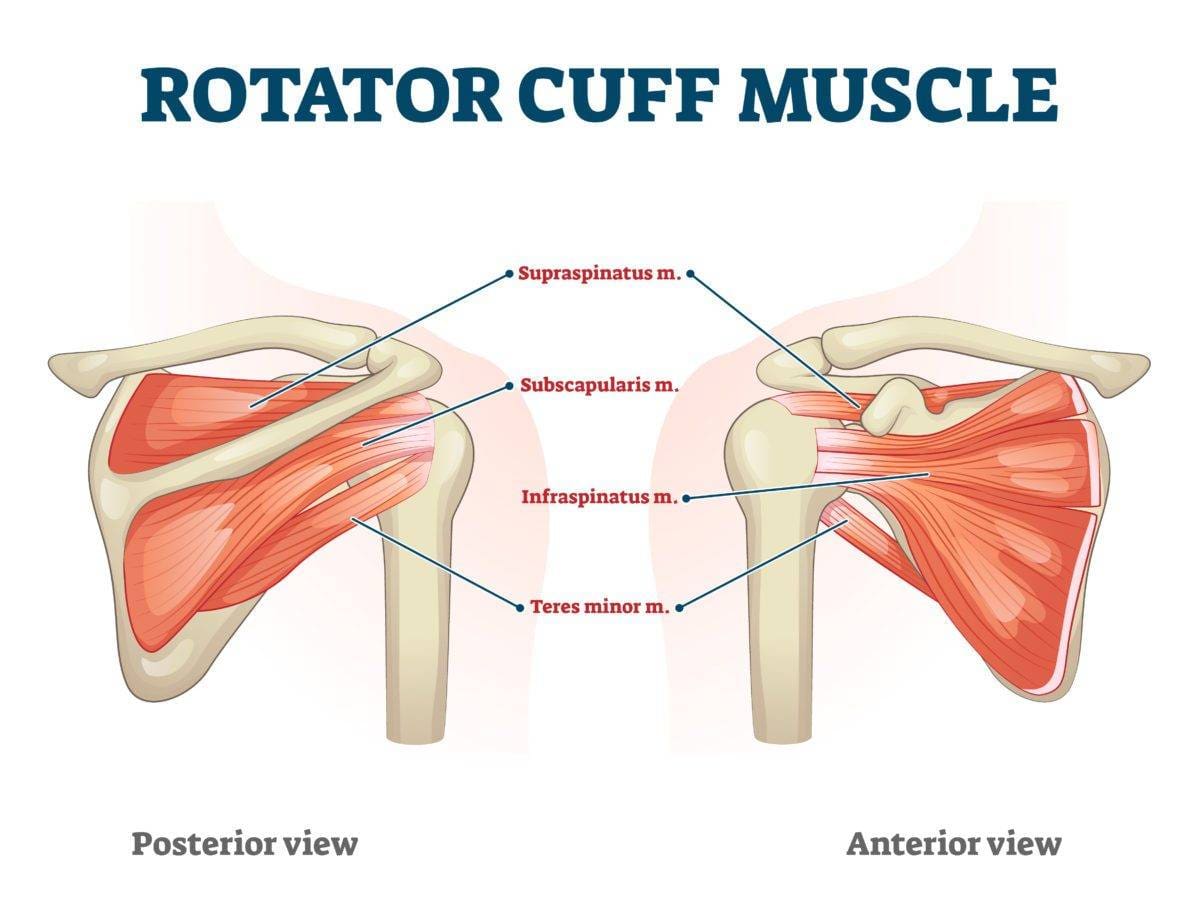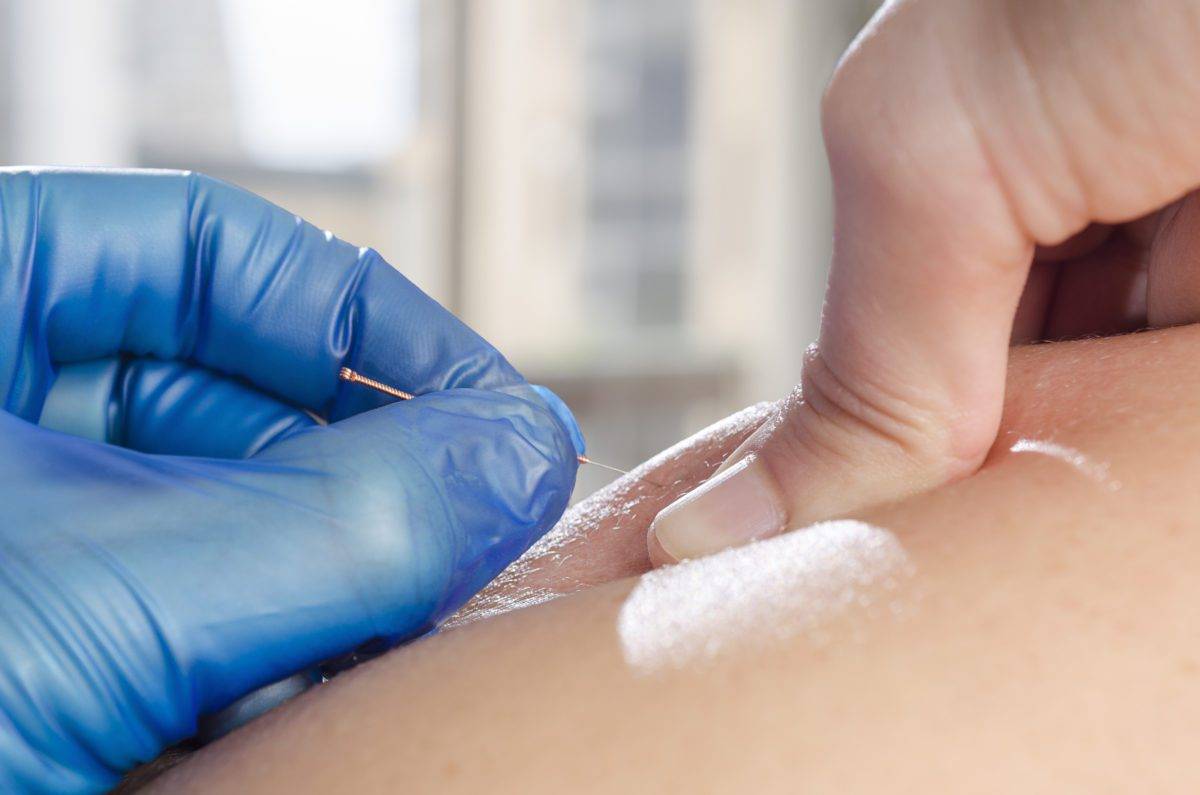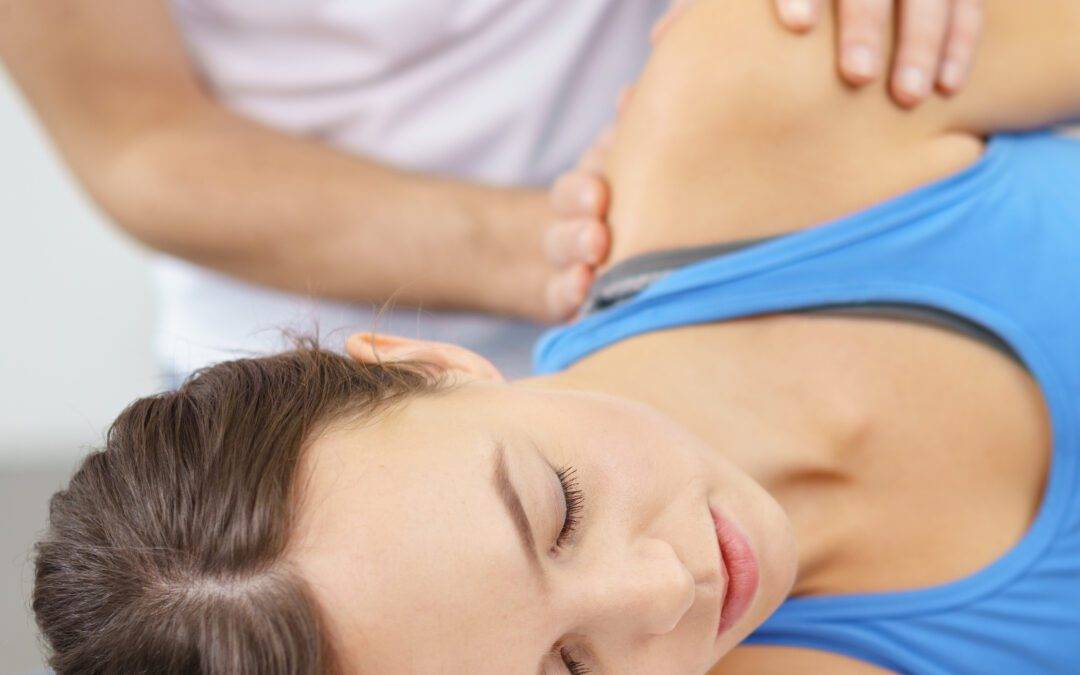By Maria Gehue, PT
4 Minute Read
A common complaint I see in clinical practice are loud joints. Typically a clicking shoulder, or a snapping hip, has been present for some time with no real mechanism of injury. Most patients are worried about the noise and what it may mean. They often wonder if the sound can be causing damage in the joint and increase their risk of developing osteoarthritis. Surprisingly enough a loud joint does not always mean a damaged joint. But it draws attention to an improper movement patterning at the joint, and if ignored for too long it will put additional stress on that joint. This uneven distribution of excessive stress can be a risk factor for degeneration and should not be ignored forever.

The shoulder joint is a shallow ball and socket joint, incredibly important for daily activities. There is a thick tissue that rims the socket, assisting in improving the depth and stability of the joint called the labrum. The rotator cuff is a group of muscles that attach from the shoulder blade to the arm. They attach over the shoulder joint, forming a supportive cuff and providing stability during arm movement, especially overhead motions. There are 4 muscles that make up this group, often referred to as the SITS muscles, with each letter standing for the initial of each muscle: supraspinatus, infraspinatus, teres minor, subscapularis. As you can see in the picture below, supraspinatus is a smaller muscle that attaches to the top of the shoulder, forming a pathway underneath the top of the shoulder blade (referred to as the acromion). When a trigger point forms in this muscle, it limits the normal gliding motion at the shoulder joint. This often results in a clicking or popping sound. Ignoring the sound may eventually catch up to the integrity of the muscle, causing inflammation and pain. Without proper diagnosis and treatment the dysfunctional motion at the shoulder joint can lead to excessive wear and tear, unevenly distributing forces through the labrum. This can wear down specific areas inside the joint causing pain and limitation in range of motion and function. Dry needling is a great treatment approach to addressing taught muscle groups. It is a quick release of tension, targeting those small tender points in muscles called trigger points.

Trigger points, or knots, can form in muscles for a variety of reasons, the most common being a response to trauma or improper postures. There can be two different types including latent and active trigger points. Latent are uncomfortable if provoked, for example applying tactile pressure. This is similar to if you went for a relaxation massage but the therapist was able to find some tender points that you were unaware of. There are also active trigger points, that cause pain spontaneously or if the muscles is trying to contract. If the trigger points are what is causing the click, you can try and relieve some of the tension with a specific stretch to the supraspinatus muscle. You would do this by reaching the affected arm behind your back with your palm facing outward. At the same time, you will try to extend your shoulder back, and gently turn your palm down. You will feel a stretch on the top of your shoulder blade. Take a deep breath in and exhale slowly, trying to hold this stretch up to 20-35 seconds. Another treatment approach to this dysfunction is dry needling, as it targets the trigger point specifically. It’s a quick and easy release that often does the trick and stops the noise. If the symptoms return, there is likely some component of stability we need to address in treatment, as this muscle is overworking and causing knots to form within.

Another joint that can be yelling for attention, is the hip. The makeup of this joint is most similar to the shoulder, as they are both ball and socket joints. With this type of joint, it allows multiple degrees of freedom, meaning it can move in many directions. This is the reason why we can sit cross legged, walk up multiple stairs at once, bend down to pick something up without falling over, and attempt many different yoga poses! The gluteal muscles and deep hip rotators similarly act as the “rotator cuff of the hip”, providing stability and strength when needed. Think of these muscle wrapping from around the buttocks to the side of the leg. But there is another muscle that is front in the front of the hip, called psoas, which can be the loud neighbour. This muscle begins in the front of the spine, and expands forward and down, crossing over the front of the hip joint. It has a long tendon and allows for forward flexion of the spine (bending your chest towards your thighs in sitting) and hip flexion (bring your knee to your chest). We use this muscle frequently throughout the day, especially when we go from sitting to standing. When this muscle gets especially stiff, the tendon can flick over a bump on the femur (leg bone), producing a sound. Typically there is no pain associated with this sound, which is why it can go unnoticed for a while. If this is something you experience, see if you can get ahead of the stiffness by stretching that muscle for a few days. If the clicking starts to disappear then great! If it lingers, there may be more pieces to the puzzle. You’ll start in a lung kneeling position, with the leg you want to stretch behind you, and your other leg bent to 90 degrees. Interlock your fingers and place your hands behind your head. Gently lean back, lifting your chest. You will start to feel a stretch in the front of your back leg, you may even feel a pull through your affected side of the abdomen.

There does not have to be pain involved with dysfunction in order to benefit from a physiotherapy assessment. If you are someone who would like to understand their body alignment and learn about individualized stretching and strengthening programs, contact our team at Active Approach to book in with our physiotherapist Maria! Get ahead of an injury before it happens.

